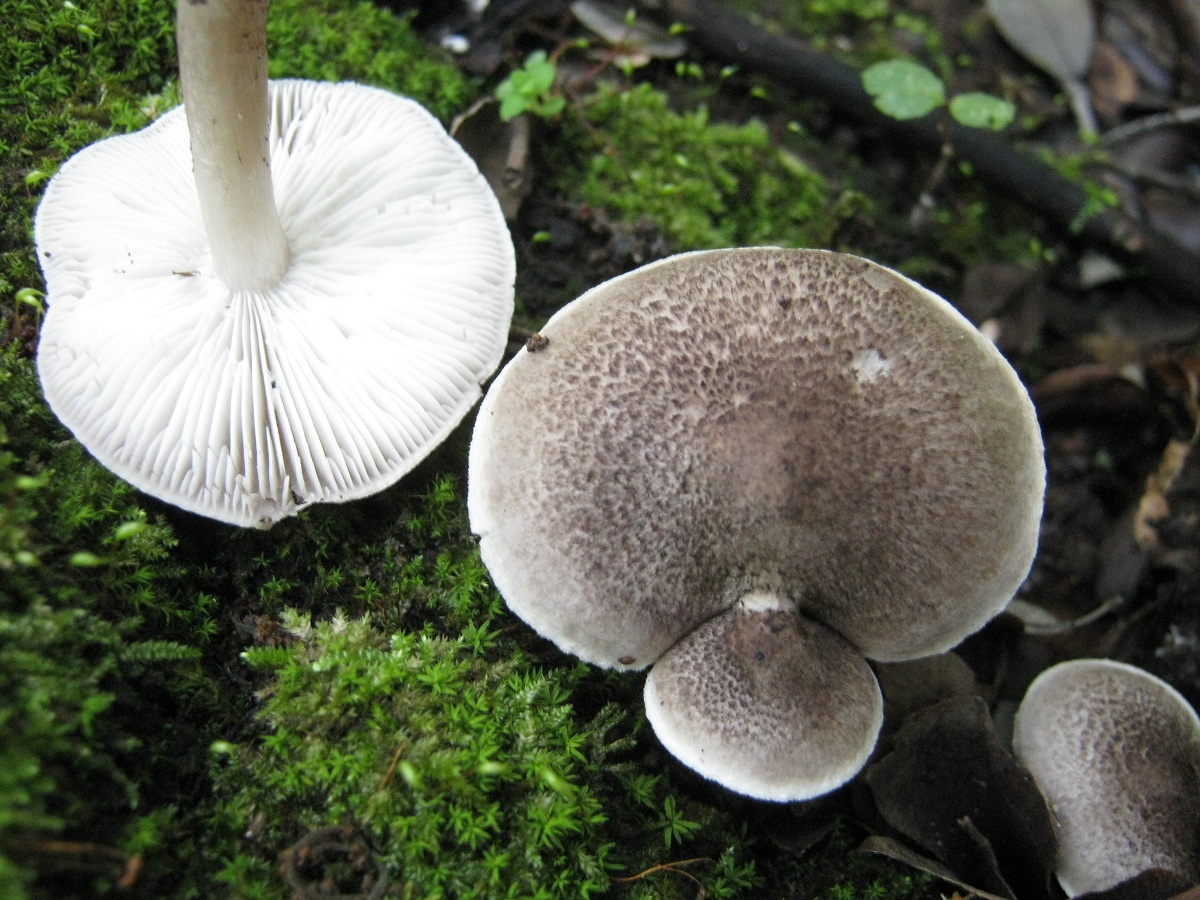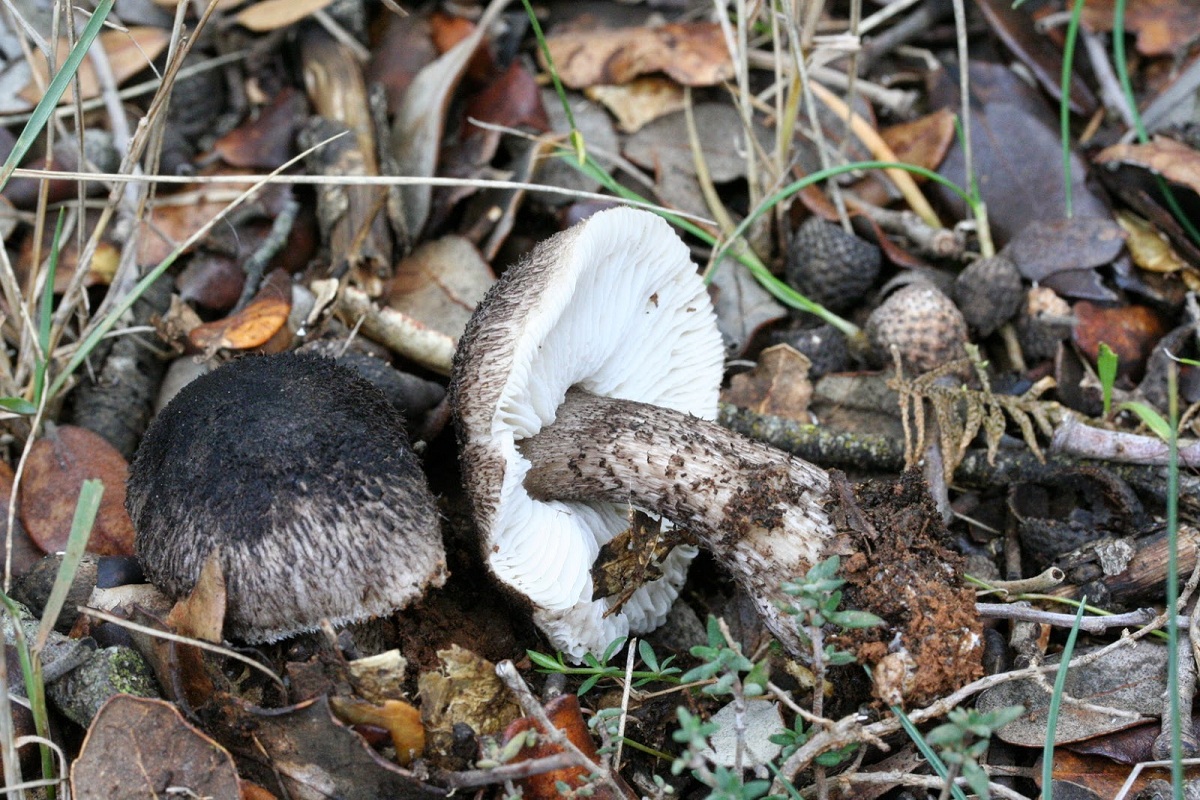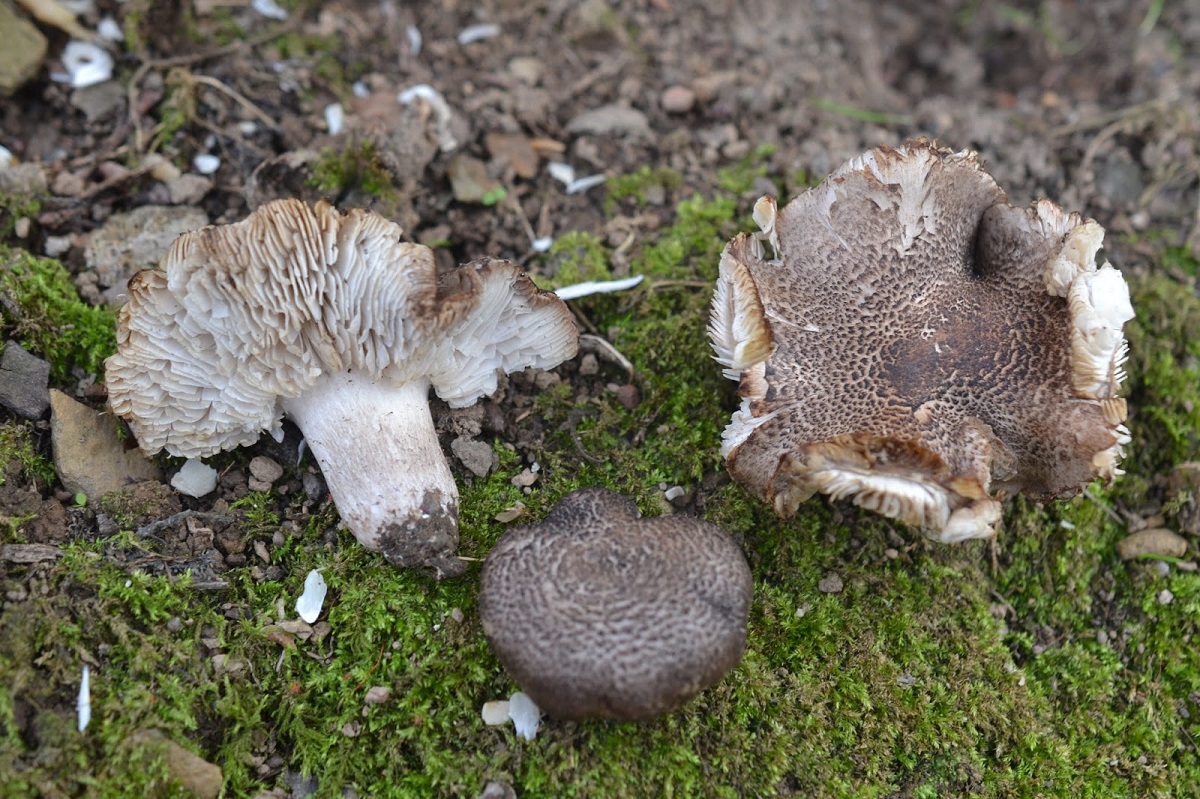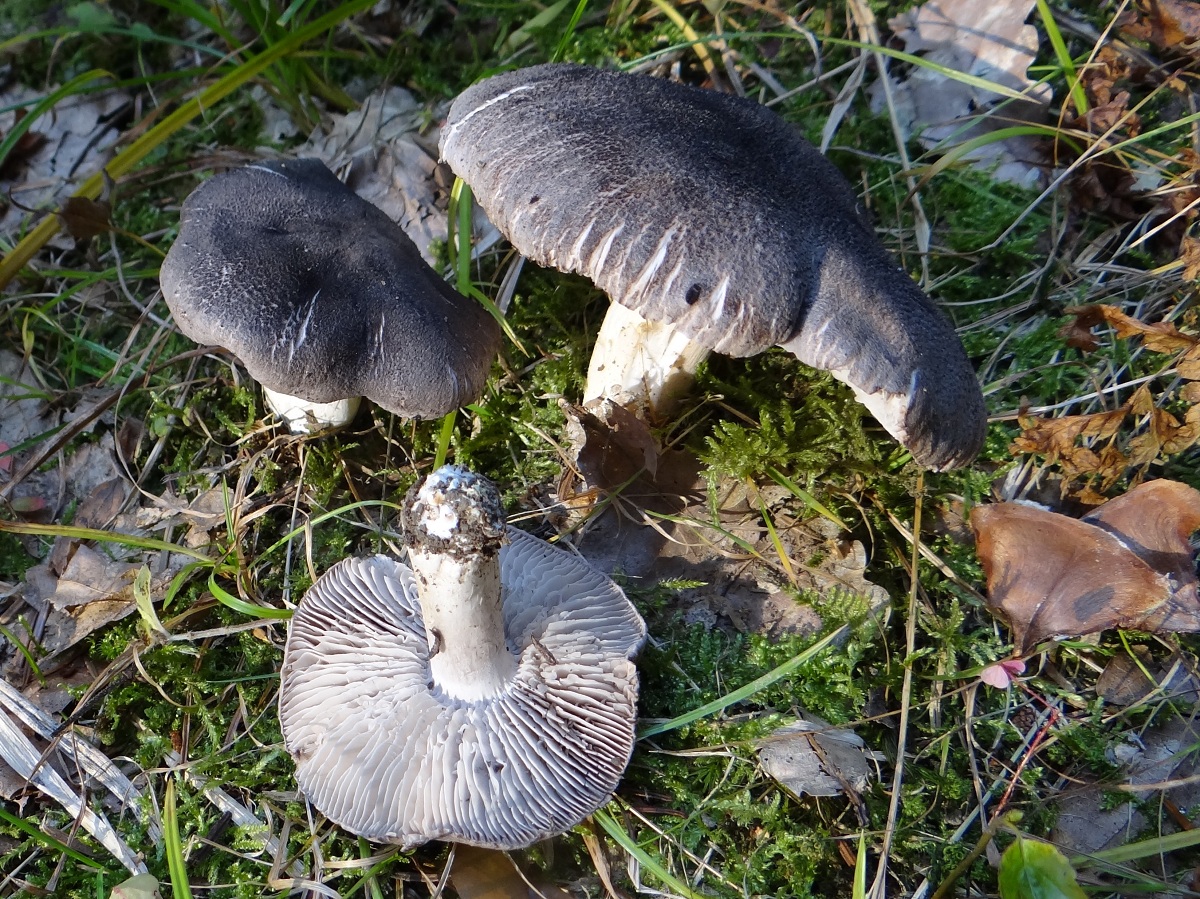
One of the mushrooms that is considered a mediocre edible but frequently collected is the Tricholoma atrosquamosum. It is a mushroom that can be easily confused with others in its group and with some that are toxic. This makes it necessary that when collecting this mushroom we know very well what its main characteristics are in order to know how to differentiate those from another. Quite a few microscopic characteristics are known about this mushroom that we will mention in this article.
If you want to know more about the mushroom Tricholoma atrosquamosum, this is your post.
Key features

Hat and foils
It is a mushroom that has a hat that normally has dimensions of between 5 to 8 centimeters in diameter. One of the characteristics of this hat that can help us differentiate it from another mushroom is the wide mamelon that it has in its central part. The hat has different shapes depending on the age of the mushroom. For example, when at first it is a young specimen we can see that it has a flat hat. As the mushroom develops, it reaches mature age, the hat turns into a convex shape.
It can help to differentiate the hat quite well fixed hands on the margins. Has the surplus margin, curved and flaky. These scales are quite easy to see with the naked eye. Its cuticle is dry and densely covered with fibrinous scales with a gray and black color. They can be easily identified as these fibrinous scales are located on a whitish gray background. These scales are somewhat darker in color and are usually tight towards the center. We can see how the mamelon located in the center of the hat helps to identify this mushroom also depending on its age.
It contains some ventruded type blades and somewhat tight between them. They are sheets that are low-cut and have a grayish white color. Sometimes we can see in some copies that they have the plates with some dotted two in black in the list.
Pie and meat
As for the foot, the Tricholoma atrosquamosum it has a cylindrical and quite fibrous foot. It is a quite characteristic foot with a white and grayish color. It has scaly fibrils with a blackish gray color and they are more dense in the upper part. If we approach the closest part adjacent to the hat we can see that the fibers are denser and tighter between them.
Lastly, the flesh is compact and white to greyish in color. It has a characteristic pepper-like odor and a sweet, floury taste. As we mentioned at the beginning of the article, it is a mediocre edible that does not have very good quality but it does serve to accompany some dishes as a condiment and as a garnish. It is easy to preserve and prepare since it does not have any degree of toxicity and is not dangerous to health. However, it is often confused with some species of the Tricholomas group that can become somewhat toxic if consumed. Therefore, it is necessary to know what the differentiating characteristics of this mushroom are so as not to make mistakes when collecting another specimen.
It is a rare species in Extremadura and is characterized by having the hat is famously light gray in color and by the slightly dotted whitish foot with gray scales. They are usually the characteristics that help the most to differentiate this species from another.
Habitat of the Tricholoma atrosquamosum

This mushroom thrives in some soils with a large amount of litter. Litter is the part that is made up of leaves from decaying deciduous trees. These leaves benefit the continuous supply of organic matter in the soil and a greater retention of humidity that allow the existence of ideal conditions for the development of mushrooms. In this case, the Tricholoma atrosquamosum It grows on the litter of the Mediterranean Quercus forests. We also find in holm oaks and oak groves, although in less abundance.
On some occasions we can see some specimens both distributed in small groups and alone in other deciduous forests such as beech and chestnut trees. Exceptionally, it has been observed in some coniferous forests. These specimens can grow in isolation if the conditions of retention of moisture and organic matter in the soil are met.
The growing season is usually in autumn, although it can last until early winter depending on rainfall and temperature. If humidity and temperature retention are ideal for its development, it can continue to grow and spread throughout the fall. Its growth can also be accelerated somewhat more if the rainfall in summer has been abundant.
It can be found earlier in beech and oak groves and later in Mediterranean forests.
Possible confusions of the Tricholoma atrosquamosum

This mushroom can be confused with some species of the same group and other varieties that are very similar in appearance. For example, the squarrulosum variety is very common and differs from the Tricholoma atrosquamosum by the foot covered with grayish scales. It has a very similar appearance to the other bold ones from which we see how they differ fundamentally by their slightly scaly hat, by their odor and lack of redness or yellowness on the foot and laminae.
These indicators must be taken into account when differentiating one species from another. There are other confusions of the same group such as the Tricholoma orirubens It has a white base, although it is more consistent and with a mealy smell. In addition, its special characteristic is that it presents a greenish or pink spot at the base of the foot. This distinguishing feature of this species.
Finally, another confusion is the tricholoma virgatum having a more bitter taste and has a smooth cap or only has scales on the edge. Its fibrils are radial.
I hope that with this information you can learn more about the Tricholoma atrosquamosum.